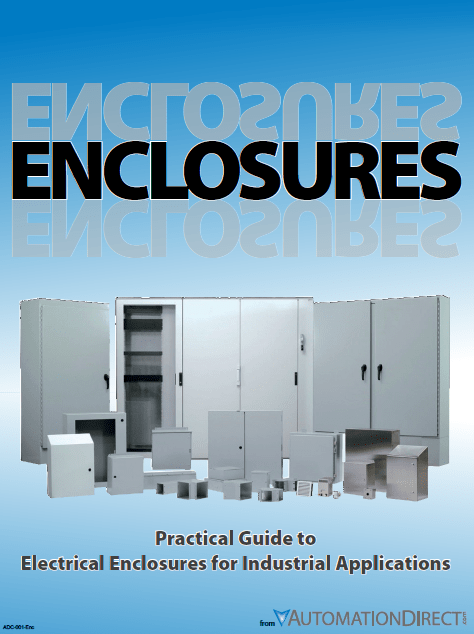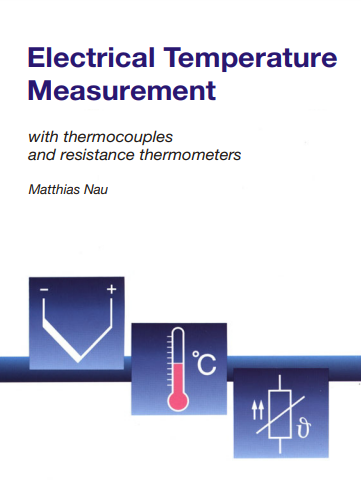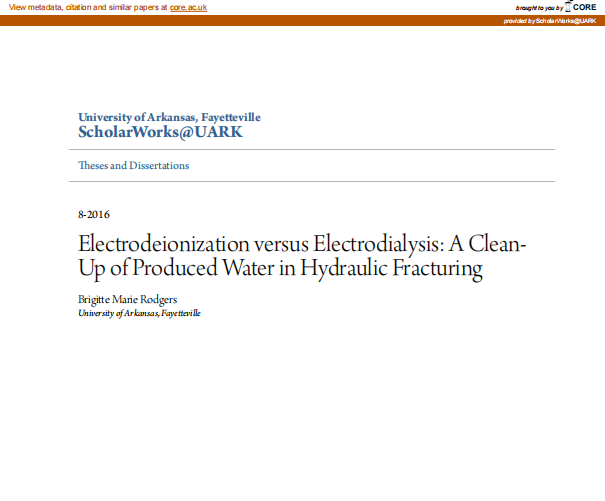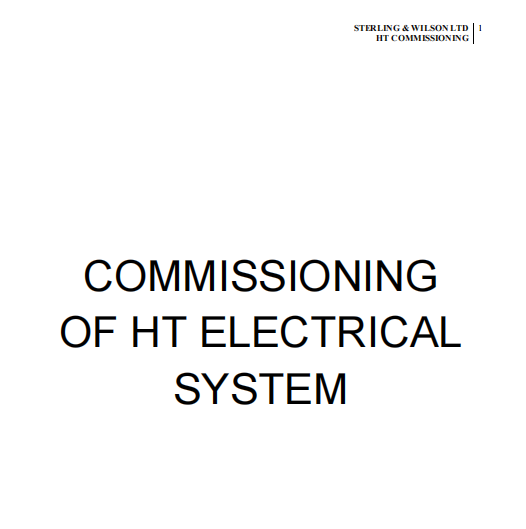Electrical & Automation
Short-Circuit Power
Views : 3
Source: https://www.se.com
Usually dispatched in 2 to 3 days
Usually dispatched in 2 to 3 days
Category:
Electrical & Automation
Only logged in customers who have purchased this product may leave a review.
Related books
Wastewater Treatment Plants Automation Master Plan
Introduction:
The City of Winnipeg has initiated a program to perform upgrades to the wastewater treatment systems at the NEWPCC, SEWPCC, and WEWPCC facilities. As part of these upgrades, automation systems are required for process control and monitoring. These automation systems must be installed to provide effective monitoring and control of the wastewater treatment processes. There are many methods of implementing an automation system, and the purpose of this document is to provide an overall strategy for automation installations that are consistent with the City’s needs. It is expected that this document will form the basis for future design work.
Wastewater Treatment Plants Automation Master Plan
Introduction:
The City of Winnipeg has initiated a program to perform upgrades to the wastewater treatment systems at the NEWPCC, SEWPCC, and WEWPCC facilities. As part of these upgrades, automation systems are required for process control and monitoring. These automation systems must be installed to provide effective monitoring and control of the wastewater treatment processes. There are many methods of implementing an automation system, and the purpose of this document is to provide an overall strategy for automation installations that are consistent with the City’s needs. It is expected that this document will form the basis for future design work.
Electrical Temperature Measurement
Electrical temperature measurement
The measurement of temperature is of special importance in numerous processes, with around 45% of all required measurement points associated with temperature. Applications include smelting, chemical reactions, food processing, energy measurement, and air conditioning. The applications mentioned are so very different, as are the service requirements imposed on the temperature sensors, their principle of operation, and their technical construction. In industrial processes, the measurement point is often a long way from the indication point; this may be demanded by the process conditions, with smelting and annealing furnaces, for example, or because central data acquisition is required. Often there is a requirement for further processing of the measurements in controllers or recorders.
The direct-reading thermometers familiar to us all in our everyday life are unsuitable for these applications; devices are needed that convert temperature into another form, an electrical signal. Incidentally, these electrical transducers are still referred to as thermometers, although, strictly speaking, what is meant is the transducer, comprising the sensor element and its surrounding protection fitting. In industrial electrical temperature measurement, pyrometers, resistance thermometers, and thermocouples are in common use. There are other measurement systems, such as oscillating quartz sensors and fiber-optic systems that have not yet found a wide application in the industry
Electrical Temperature Measurement
Electrical temperature measurement
The measurement of temperature is of special importance in numerous processes, with around 45% of all required measurement points associated with temperature. Applications include smelting, chemical reactions, food processing, energy measurement, and air conditioning. The applications mentioned are so very different, as are the service requirements imposed on the temperature sensors, their principle of operation, and their technical construction. In industrial processes, the measurement point is often a long way from the indication point; this may be demanded by the process conditions, with smelting and annealing furnaces, for example, or because central data acquisition is required. Often there is a requirement for further processing of the measurements in controllers or recorders.
The direct-reading thermometers familiar to us all in our everyday life are unsuitable for these applications; devices are needed that convert temperature into another form, an electrical signal. Incidentally, these electrical transducers are still referred to as thermometers, although, strictly speaking, what is meant is the transducer, comprising the sensor element and its surrounding protection fitting. In industrial electrical temperature measurement, pyrometers, resistance thermometers, and thermocouples are in common use. There are other measurement systems, such as oscillating quartz sensors and fiber-optic systems that have not yet found a wide application in the industry
Electrodeionization versus Electrodialysis: A Clean- Up of Produced Water in Hydraulic Fracturing
Abstract:
Electrodeionization (EDI) is a widely studied process ranging from applications in wastewater clean-up in the food and beverage industry to purifying organic compounds. To date, there are no apparent studies on applying this technology to produced wastewater recovered from hydraulic fracking sites. Water consumption within hydraulic fracturing sites can reach in the upwards of millions of gallons per site, so a need for a water recycling process becomes necessary within areas where water requirements are scarce. Implementation of an EDI module that is capable of handling high salt solutions from produced wastewater in subsequent fracturing practices will decrease overall water demands, making this an environmentally sustainable process as well. This study will focus on the selective removal of high concentrations of ions using ion-selective membranes and ion exchange wafers in Wafer-Enhanced Electrodeionization (WE-EDI) of hydraulic fracturing solutions for improved water recovery and reuse within industrial applications. Experiments were performed using a WE-EDI setup with varied wafer composition and thickness in comparison with electrodialysis for selective removal of divalent ions (Ca2+) over monovalent ions (Na+ ) from simulated and fracking solutions. Research sought to show that when increasing the wafer thickness and changing the composition (weak acid compared to strong acid resins) there would be a greater overall current efficiency observed and subsequently lower power consumption. This research concluded that there is some degree of enhanced selectivity with increased wafer size, as well as varied composition compared to a traditional ED system. Continued research is recommended to conclude uncertainties, eliminate areas of system performance error and to further solidify all hypothesizes within this research.
Electrodeionization versus Electrodialysis: A Clean- Up of Produced Water in Hydraulic Fracturing
Abstract:
Electrodeionization (EDI) is a widely studied process ranging from applications in wastewater clean-up in the food and beverage industry to purifying organic compounds. To date, there are no apparent studies on applying this technology to produced wastewater recovered from hydraulic fracking sites. Water consumption within hydraulic fracturing sites can reach in the upwards of millions of gallons per site, so a need for a water recycling process becomes necessary within areas where water requirements are scarce. Implementation of an EDI module that is capable of handling high salt solutions from produced wastewater in subsequent fracturing practices will decrease overall water demands, making this an environmentally sustainable process as well. This study will focus on the selective removal of high concentrations of ions using ion-selective membranes and ion exchange wafers in Wafer-Enhanced Electrodeionization (WE-EDI) of hydraulic fracturing solutions for improved water recovery and reuse within industrial applications. Experiments were performed using a WE-EDI setup with varied wafer composition and thickness in comparison with electrodialysis for selective removal of divalent ions (Ca2+) over monovalent ions (Na+ ) from simulated and fracking solutions. Research sought to show that when increasing the wafer thickness and changing the composition (weak acid compared to strong acid resins) there would be a greater overall current efficiency observed and subsequently lower power consumption. This research concluded that there is some degree of enhanced selectivity with increased wafer size, as well as varied composition compared to a traditional ED system. Continued research is recommended to conclude uncertainties, eliminate areas of system performance error and to further solidify all hypothesizes within this research.
Electrical Advanced-Level Training
Introduction:
This training is recommended for inspectors performing component design bases inspections (CDBIs) or other detailed inspections of electrical systems. Inspectors with demonstrated experience may be grandfathered in the completion of this training, if approved by the division director.
Completion of technical proficiency-level training (Appendix C in IMC 1245) is strongly recommended before beginning this training. You may complete the requirements in this training standard along with the general proficiency requirements contained in Appendix B and
the technical proficiency requirements in Appendix C.
Objectives of Advanced-Level Training This training focuses on the activities necessary to fully develop individuals as lead or “experts” in the electrical inspection area. It is not the intent that all certified inspectors will complete all of the ISAs in this advanced appendix. In addition, this appendix should also be viewed as an inspector’s aid and could be used during an inspection to assist in inspecting a particular area.
Electrical Advanced-Level Training
Introduction:
This training is recommended for inspectors performing component design bases inspections (CDBIs) or other detailed inspections of electrical systems. Inspectors with demonstrated experience may be grandfathered in the completion of this training, if approved by the division director.
Completion of technical proficiency-level training (Appendix C in IMC 1245) is strongly recommended before beginning this training. You may complete the requirements in this training standard along with the general proficiency requirements contained in Appendix B and
the technical proficiency requirements in Appendix C.
Objectives of Advanced-Level Training This training focuses on the activities necessary to fully develop individuals as lead or “experts” in the electrical inspection area. It is not the intent that all certified inspectors will complete all of the ISAs in this advanced appendix. In addition, this appendix should also be viewed as an inspector’s aid and could be used during an inspection to assist in inspecting a particular area.
Field Instrumentation
Basic terms related to temperature
Different scales conversion
Basic temperature measuring techniques
RTD’s and its application
Thermocouples and their applications
Comparison between RTDs and Thermocouples
State the effect on the indicated temperature for failures, open circuits, and short
circuit
Field Instrumentation
Basic terms related to temperature
Different scales conversion
Basic temperature measuring techniques
RTD’s and its application
Thermocouples and their applications
Comparison between RTDs and Thermocouples
State the effect on the indicated temperature for failures, open circuits, and short
circuit
Design Calculations for Electrical Design
Introduction:
Design calculations establish minimum guidelines and requirements for generating electrical calculations on projects. Electrical calculations should be made for all SPU projects that include electrical components and should be filed in the project notebook. Design calculations may be made either manually or by SPU-approved computer programs
Design Calculations for Electrical Design
Introduction:
Design calculations establish minimum guidelines and requirements for generating electrical calculations on projects. Electrical calculations should be made for all SPU projects that include electrical components and should be filed in the project notebook. Design calculations may be made either manually or by SPU-approved computer programs
Energy Efficient Electric Motors Systems
Introduction:
This manual gives a brief description of state-of-the-art technologies used to develop high efficiency motors, including premium efficiency induction motors, permanent magnet motors, and switched reluctance motors.
It also analyses issues that affect motor system efficiency and provides guidelines on how to deal with those issues namely by:
Selection of energy‐efficient motors
Properly sizing of motors;
Using Variable Speed Drives (VSDs), where appropriate. The use of VSDs can
lead to better process control, less wear in the mechanical equipment, less
acoustical noise, and significant energy savings;
Optimisation of the complete system, including, the distribution network,
power quality and efficient transmissions;
Motor Systems Energy Assessments
Taking Measurements
Applying best maintenance practices.
Motor Repair
How to win approval for energy efficiency projects
Energy Management Systems
Energy Efficient Electric Motors Systems
Introduction:
This manual gives a brief description of state-of-the-art technologies used to develop high efficiency motors, including premium efficiency induction motors, permanent magnet motors, and switched reluctance motors.
It also analyses issues that affect motor system efficiency and provides guidelines on how to deal with those issues namely by:
Selection of energy‐efficient motors
Properly sizing of motors;
Using Variable Speed Drives (VSDs), where appropriate. The use of VSDs can
lead to better process control, less wear in the mechanical equipment, less
acoustical noise, and significant energy savings;
Optimisation of the complete system, including, the distribution network,
power quality and efficient transmissions;
Motor Systems Energy Assessments
Taking Measurements
Applying best maintenance practices.
Motor Repair
How to win approval for energy efficiency projects
Energy Management Systems















Reviews
There are no reviews yet.